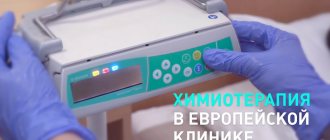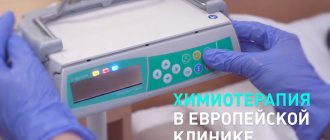GlucaGen 1 mg HypoKit, 1 piece, 1 mg, lyophilisate for solution for injection
For the treatment of severe hypoglycemic conditions
To prepare an injection solution, 1 mg (1 IU) of the lyophilisate is dissolved in 1 ml of solvent.
Adults and children weighing more than 25 kg or older than 6–8 years are administered 1 mg (1 ml, 1/1 mark on the syringe). Children weighing less than 25 kg or younger than 6–8 years are administered 0.5 mg (0.5 ml, 1/2 mark on the syringe) subcutaneously or intramuscularly. The patient usually regains consciousness within 10 minutes after administration of the drug. Once the patient regains consciousness, he should be given a carbohydrate-rich meal to prevent recurrence of hypoglycemia and restore glycogen in the liver. If the patient does not regain consciousness within 10 minutes, he needs to be given intravenous dextrose.
All patients with severe hypoglycemia require medical attention.
Preparation of solution for injection
1. Remove the plastic cap from the bottle and the protective needle tip from the syringe. Puncture the rubber stopper of the bottle containing GlucaGen® with a needle and inject all the liquid in the syringe into the bottle.
2. Without removing the needle from the bottle, carefully shake the bottle until GlucaGen® is completely dissolved and a clear solution is formed.
3. Make sure the piston is pushed all the way forward. Draw up the entire solution into a syringe. Care must be taken to ensure that the plunger does not come out of the syringe.
4. Release the air from the syringe and inject.
Dispose of any unused product and packaging in accordance with local regulations.
For diagnosis (suppression of contractility of the gastrointestinal tract)
GlucaGen® 1 mg HypoKit should only be administered by medical personnel. After intravenous administration of 0.2–0.5 mg, the effect of the drug begins within 1 minute and lasts from 5 to 20 minutes, depending on the organ being examined.
After intramuscular administration of 1–2 mg, the effect of the drug begins in 5–15 minutes and lasts 10–40 minutes, depending on the organ being examined. After completion of the procedure, the patient should be given carbohydrate-rich foods if this is compatible with the diagnostic procedure being used.
Depending on the diagnostic method used and the method of administration, the dose of the drug is 0.2–2 mg. The usual diagnostic dose used to relax the muscles of the stomach, duodenal bulb, duodenum and small intestine is 0.2–0.5 mg IV and 1 mg IM. The dose for relaxing the rectal muscles is 0.5–0.75 mg for intravenous administration and 1–2 mg for intramuscular administration.
Glucagen bottle. 1 mg HypoKit No. 1 (glucagon hydrochloride genetically engineered)
Full description
[RU]
Trade name
GlucaGen® 1 mg HypoKit
International nonproprietary name
Glucagon
Dosage form
Lyophilisate for the preparation of solution for injection 1 mg complete with solvent
Compound
One bottle contains
active substance - biosynthetic glucagon hydrochloride 1 mg (corresponds to 1 IU),
excipient - lactose monohydrate
solvent composition per syringe: sterile water for injection
Description
Lyophilized white powder.
The reconstituted drug is a clear, colorless solution.
Pharmacotherapeutic group
Pancreatic hormones. Hormones that break down glycogen. Glucagon.
ATX code N04AA01
Pharmacological properties
Pharmacokinetics
Metabolism
Glucagon is metabolized enzymatically in the blood plasma and in the organs in which it is distributed. The major sites of glucagon metabolism are the liver and kidneys, with each organ contributing approximately 30% to the overall rate of metabolic clearance.
Removal
Glucagon has a short half-life in the blood of about 3-6 minutes. The rate of metabolic clearance of glucagon in the human body is about 10 ml/kg/min.
Pharmacodynamics
Mechanism of action
Glucagon is a hyperglycemic agent that mobilizes glycogen in the liver, which is released into the blood as glucose. Glucagon inhibits the tone and motility of the smooth muscles of the gastrointestinal tract.
Pharmacodynamic properties
When treating severe hypoglycemia, the effect of glucagon on blood glucose concentrations is usually observed within 10 minutes.
The inhibitory effect of the drug on gastrointestinal motility begins 1 minute after intravenous injection, the duration of action of the drug is 5-20 minutes depending on the dose. The effect of the drug begins 5-15 minutes after intramuscular injection and lasts from 10 to 40 minutes depending on the dose.
Indications for use
Therapeutic indication
- severe hypoglycemic conditions that occur in patients with diabetes mellitus after insulin injection
Diagnostic indication
— for diagnostics: suppression of motility during examination of the gastrointestinal tract
Directions for use and doses
Dosing
Therapeutic indication (Severe hypoglycemia)
Dosage for adult patients: Administer 1 mg via subcutaneous or intramuscular injection.
Special Populations
Children's population (< 18 years old)
GlucaGen® can be used to treat severe hypoglycemia in children and adolescents.
Dosage for pediatric patients: Administer 0.5 mg (children weighing up to 25 kg or aged under 6-8 years) or 1 mg (children weighing more than 25 kg or aged over 6-8 years).
Elderly patients (≥ 65 years)
GlucaGen® can be prescribed to elderly patients.
Patients with impaired renal and liver function
GlucaGen® can be prescribed to patients with impaired renal or liver function.
Diagnostic indication (inhibition of gastrointestinal motility)
Dosage for adult patients: The diagnostic dose for relaxation of the stomach, duodenal bulb, duodenum and small intestine is 0.2-0.5 mg administered intravenously or 1 mg administered intramuscularly; The dose for colon relaxation is 0.5-0.75 mg intravenously or 1-2 mg intramuscularly.
Special Populations
Children's population (< 18 years old)
The safety and effectiveness of GlucaGen® for inhibition of gastrointestinal motility in children and adolescents have not been studied. No data available.
Elderly patients (≥ 65 years)
GlucaGen® can be prescribed to elderly patients.
Patients with impaired renal and liver function
GlucaGen® can be prescribed to patients with impaired renal or liver function.
Mode of application
To prepare an injection solution, 1 mg (1 IU) of powder is dissolved in 1 ml of solvent.
Therapeutic indication (Severe hypoglycemia)
Injections are administered subcutaneously or intramuscularly. The patient usually returns to normal within 10 minutes. Once the patient regains consciousness, he should be given a diet rich in carbohydrates to restore glycogen in the liver and prevent the recurrence of hypoglycemia. If the patient does not regain consciousness within 10 minutes, he needs to be given a glucose solution intravenously.
Diagnostic indication (inhibition of gastrointestinal motility)
GlucaGen® must be administered by medical personnel. The onset of action after intravenous administration of 0.2-0.5 mg occurs within one minute, and the duration of action ranges from 5 to 20 minutes. The onset of action after intramuscular injection of 1-2 mg occurs after 5-15 minutes and lasts about 10-40 minutes.
After completion of the diagnostic procedure, the patient should be given a carbohydrate-rich meal if compatible with the diagnostic procedure being used.
Side effects
Security Profile at a Glance
Serious adverse reactions are very rare, although nausea, vomiting and abdominal pain may occur from time to time. Allergic reactions, including anaphylactic reactions, were reported as “very rare” (less than 1 in 10,000 patients).
When used for diagnostic indications, there have been reports of hypoglycemia/hypoglycemic coma, especially in fasting patients.
Cardiovascular side effects such as tachycardia and changes in blood pressure have been reported only when GlucaGen® was used as an adjunct during endoscopic or radiological procedures.
Tabular list of adverse reactions
The frequency of adverse events considered to be related to treatment with GlucaGen® during clinical trials and/or post-marketing surveillance is presented below. Side effects that were not observed in clinical trials but were spontaneously reported are reported as “very rare.” During marketing use, reported adverse drug reactions are very rare (<1/10,000). However, post-marketing experience is a subject of accountability and the reporting level should be interpreted in that light.
Therapeutic indication
| Classification by system organs | Frequency | Adverse drug reactions |
| Immune system disorders | Very rare < 1/10,000 | Hypersensitivity reactions, including anaphylactic reactions/shock |
| Gastrointestinal disorders | Often ≥ 1/100 to < 1/10 Uncommon ≥ 1/1,000 to < 1/100 Rarely ≥ 1/10,000 to < 1/1,000 | Nausea Vomit Abdominal pain |
Children's population
Based on clinical trial data and post-marketing experience, the frequency, type and severity of adverse reactions observed in children are expected to be similar to those observed in adult patients.
Other special populations
Based on clinical trial data and post-marketing experience, the incidence, type and severity of adverse reactions observed in elderly patients and in patients with impaired renal or hepatic function are expected to be similar to those observed in the general population.
Diagnostic indication
| Classification by system organs | Frequency | Adverse drug reactions |
| Immune system disorders | Very rare < 1/10,000 | Hypersensitivity reactions, including anaphylactic reactions/shock |
| Metabolic and nutritional disorders | Uncommon ≥ 1/1,000 to < 1/100 Very rare < 1/10,000 | Hypoglycemia*1 Hypoglycemic coma |
| Cardiac disorders | Very rare < 1/10,000 | Tachycardia*2 |
| Vascular disorders | Very rare < 1/10,000 Very rare < 1/10,000 | Hypotension*2 Hypertension*2 |
| Gastrointestinal disorders | Often ≥ 1/100 to < 1/10 Uncommon ≥ 1/1,000 to < 1/100 Rarely ≥ 1/10,000 to < 1/1,000 | Nausea Vomit Abdominal pain |
* 1 After the diagnostic procedure, the reaction may be more pronounced in patients on an empty stomach (see section Special instructions).
*2 Cardiovascular adverse reactions were reported only when GlucaGen® was used as an adjuvant in endoscopic or radiological procedures.
Children's population
There are no data on the use of GlucaGen® with diagnostic indications in children.
Other special populations
Based on clinical trial and post-marketing data, the frequency, type and severity of adverse reactions observed in elderly patients and in patients with impaired renal or hepatic function do not indicate any differences compared with the general population.
Report of suspected adverse reactions
Reporting suspected adverse reactions after drug approval is very important. This allows continued monitoring of the benefit/risk ratio of the drug. Healthcare professionals are asked to report any suspected adverse reactions through national reporting systems.
Contraindications
- increased individual sensitivity to glucagon or any other component of the drug
- hyperglycemia
- pheochromocytoma
Drug interactions
Insulin: The action of glucagon is opposite to the action of insulin (insulin is a glucagon antagonist).
Indomethacin: When used together, glucagon may lose its ability to increase blood glucose and even cause hypoglycemia.
Warfarin: When used together, glucagon may enhance the effect of the anticoagulant warfarin.
Beta blockers: Patients taking beta blockers may expect increases in heart rate and blood pressure. Due to the short half-life of glycogen, the increase in both parameters will be temporary. Increased blood pressure and heart rate may require therapy in patients with coronary artery disease.
There are no known interactions between GlucaGen® and other drugs when GlucaGen® is used for its approved indications.
special instructions
In the treatment of severe hypoglycemic conditions
After the patient has regained consciousness, to prevent recurrence of hypoglycemia, he should be given a diet rich in carbohydrates to restore glycogen stores in the liver.
Glucagon is not effective in treating patients whose liver glycogen stores are depleted. For this reason, glucagon has little or no effect in treating patients who are fasting for long periods of time or those with adrenal insufficiency, chronic hypoglycemia, or alcohol-induced hypoglycemia.
Unlike adrenaline, glucagon does not affect muscle phosphorylase and therefore cannot promote the transport of carbohydrates from the richer glycogen stores of skeletal muscles.
The tip of the syringe cap included in the GluckGen® 1 mg HypoKit® kit contains natural rubber latex, which can cause allergic reactions in people sensitive to latex.
Diagnostic Application
Patients receiving glucagon in connection with diagnostic procedures may experience discomfort, especially if the procedures were performed on an empty stomach. There have been reports of nausea, hypoglycemia and changes in blood pressure in these situations. After completion of the diagnostic procedure, fasted patients should be given a carbohydrate-rich meal if compatible with the diagnostic procedure used. If fasting is necessary after the examination or in cases of severe hypoglycemia, intravenous dextrose (glucose) may be required.
Glucagon is an insulin antagonist, and caution should be exercised when using GlucaGen® 1 mg HypoKit in patients with insulinoma as well as glucagonoma.
Caution should also be exercised when using GlucaGen® 1 mg HypoKit as an adjuvant during endoscopic or radiographic procedures in patients with diabetes mellitus or in elderly patients with pathology of the cardiovascular system.
Glucagon stimulates the release of catecholamines. In the presence of pheochromocytoma, glucagon can cause the tumor to release large amounts of catecholamines, which can lead to an acute hypertensive reaction. Glucagon is contraindicated in patients with pheochromocytoma (see section Contraindications).
GlucaGen® is unstable in solution, so the drug should be administered immediately after reconstitution.
GlucaGen® 1 mg HypoKit should not be administered as an intravenous infusion.
The bottle with GlucaGen® is equipped with a plastic cap, which should be removed before preparing the solution.
Do not use the prepared solution if it has a gel-like consistency or contains undissolved particles.
The drug GlucaGen® 1 mg HypoKit contains lactose monohydrate, therefore it is not recommended for use in patients with hereditary galactose intolerance, Lapp-lactase deficiency, glucose/galactose malabsorption syndrome.
Pregnancy and lactation
Pregnancy GluckGen® does not cross the human placental barrier. Available data on the use of glucagon in pregnant women with diabetes indicate the absence of adverse effects on both the course of pregnancy and the health of the fetus and newborn. GlucaGen® can be used during pregnancy.
Lactation period
Glucagon is cleared very quickly from the bloodstream (mainly through the liver, T1/2 = 3–6 min), so the amount of glucagon excreted in mother's milk after using the drug for severe hypoglycemia is extremely small. Because glucagon is broken down in the digestive tract and therefore not absorbed unchanged, it has no metabolic effect on the baby. GlucaGen® can be used during breastfeeding.
Fertility
Animal reproduction studies have not been conducted with GlucaGen®. Studies in rats have shown that glucagon does not cause fertility problems.
Features of the effect of the drug on the ability to drive vehicles and potentially dangerous mechanisms
Following an episode of severe hypoglycemia, the patient's ability to concentrate and react may be impaired. Therefore, the patient should not operate vehicles or potentially dangerous machinery after severe hypoglycemia until the patient's condition has fully recovered.
Hypoglycemia has been reported infrequently following diagnostic procedures. Therefore, driving vehicles and machinery should be avoided until the patient has consumed carbohydrate-rich foods.
Overdose
Symptoms: in case of an overdose of GlucaGen ® , nausea, vomiting, diarrhea, hypokalemia, increased blood pressure, and tachycardia may occur.
Due to the short half-life of glucagon, these symptoms will be temporary.
Treatment is symptomatic. Constant monitoring of potassium levels is necessary and, if necessary, its correction. The use of forced diuresis and hemodialysis is ineffective. If vomiting occurs, rehydrate and replace potassium losses.
Release form and packaging
1 mg of the drug in a glass bottle of hydrolytic class I, sealed with a bromobutyl stopper and crimped with an aluminum cap. The bottle contains a protective plastic cap, which is removed before use.
1 ml of solvent (water for injection) in a disposable glass syringe of hydrolytic class I, with a piston and needle.
Labels are placed on the bottle and syringe.
One bottle with the drug, one syringe with a solvent, together with instructions for medical use in the state and Russian languages, are placed in a plastic pencil case.
Storage conditions
Store at a temperature not exceeding 25 °C.
The user can store GlucaGen® 1 mg HypoKit at a temperature not exceeding 25 °C for up to 18 months within the expiration date.
Store in original packaging to protect from light.
Do not freeze.
The prepared solution of GlucaGen ® should be used immediately after preparation.
Do not store the prepared solution for later use.
Keep out of the reach of children!
Shelf life
Kit (HypoKit)
2 years
Do not use after the expiration date stated on the package.
Conditions for dispensing from pharmacies
On prescription
Manufacturer
Name and country of the manufacturing organization
Novo Nordisk A/C
Novo Alle, DK-2880
Bagsvaerd, Denmark
Name and country of the marketing authorization holder
Novo Nordisk A/S, Denmark
Name and country of the packing organization
Novo Nordisk A/S, Denmark
Address of the organization on the territory of the Republic of Kazakhstan that accepts claims (suggestions) regarding the quality of medicinal products from consumers and is responsible for post-registration monitoring of the safety of the medicinal product
Representative office of Novo Nordisk A/S in the Republic of Kazakhstan
Address: 050010, Almaty, Business, Dostyk Avenue,
38, Block B, South side, 8th floor.
Phone number
Fax number
E-mail address
GlucaGen® is a trademark owned by Novo Nordisk A/C, Denmark
© 20XX
Novo Nordisk A/S
Preparation of solution for injection
- Remove the orange cap from the bottle and the protective needle tip from the syringe. Puncture the rubber stopper of the bottle containing GlucaGen ® and inject all the liquid in the syringe into the bottle.







